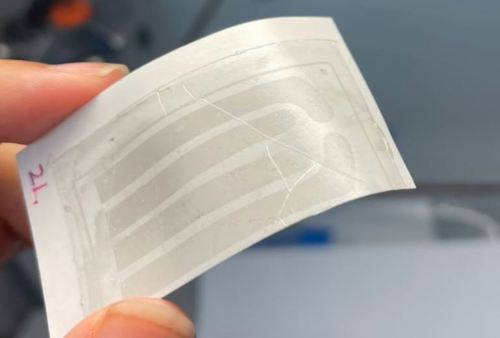
Researchers at Northwestern University and the University of Texas at Austin have developed a thin and flexible graphene “tattoo” that can be affixed to the outside of the heart, and which can monitor heart rhythms and apply corrective electrical impulses to treat arrhythmias. The patch is optically clear, allowing the researchers to also use light to monitor and stimulate the heart. The technology has clear benefits over current pacemakers, which tend to include rigid components that can cause damage to soft tissue and potentially interfere with the natural motion of the heart.
Using soft materials to create medical technologies that are more in tune with their soft tissue surroundings is a highly active area of research. From surgical soft robots to implantable drug delivery depots, the opportunities are endless. This latest research showcases a soft and flexible pacemaking technology that can be affixed directly to the heart surface, bypassing a major limitation of rigid pacemakers.
“One of the challenges for current pacemakers and defibrillators is that they are difficult to affix onto the surface of the heart,” said Igor Efimov, one of the creators of the new technology. “Defibrillator electrodes, for example, are essentially coils made of very thick wires. These wires are not flexible, and they break. Rigid interfaces with soft tissues, like the heart, can cause various complications. By contrast, our soft, flexible device is not only unobtrusive but also intimately and seamlessly conforms directly onto the heart to deliver more precise measurements.”

The researchers chose to use graphene for their flexible pacemaker as it is strong and lightweight, while also providing electrical conductivity and biocompatibility. “For bio-compatibility reasons, graphene is particularly attractive,” said Efimov. “Carbon is the basis of life, so it’s a safe material that is already used in different clinical applications. It also is flexible and soft, which works well as an interface between electronics and a soft, mechanically active organ.”
The device is also optically clear, allowing the researchers to use an external light source to illuminate the surface of the heart through the patch. This technique is called optocardiography, and it involves using light to image and assess cardiac electrophysiology. “We can essentially combine electrical and optical functions into one biointerface,” said Efimov. “Because graphene is optically transparent, we can actually read through it, which gives us a much higher density of readout.”
Study in journal Advanced Materials: Graphene Biointerface for Cardiac Arrhythmia Diagnosis and Treatment
Flashback: Battery-Free Wireless Pacemaker Dissolves Post Treatment
Via: Northwestern University
Source: medgadget.com




